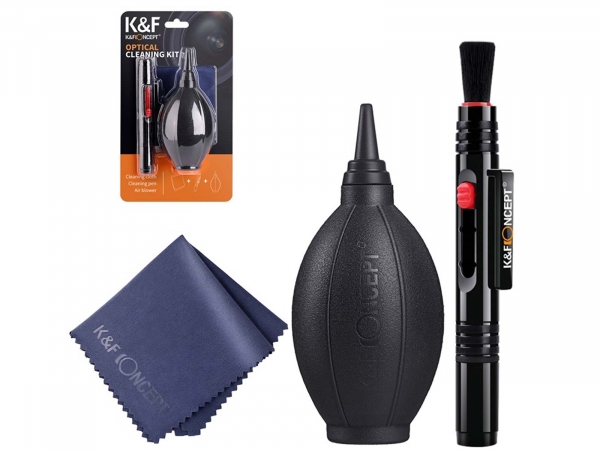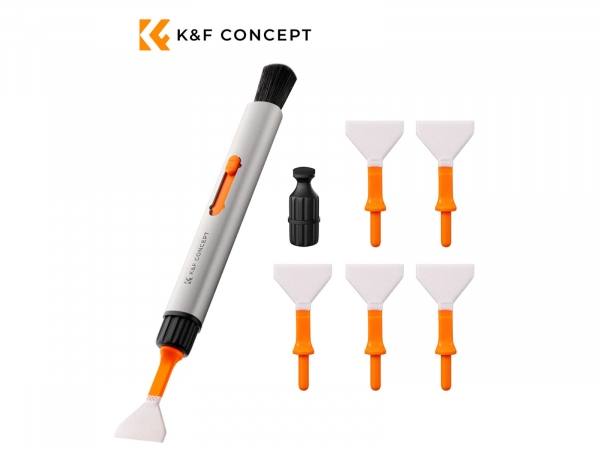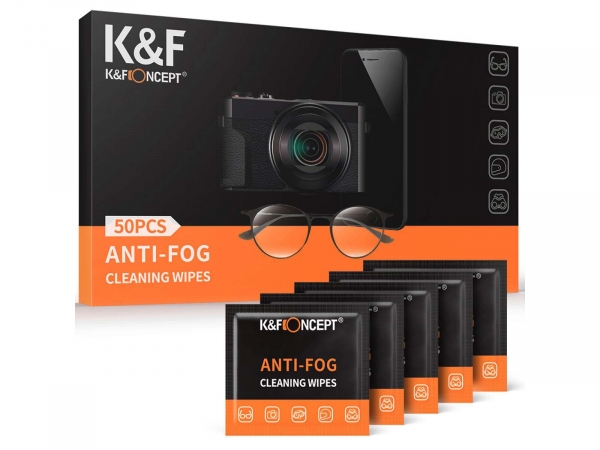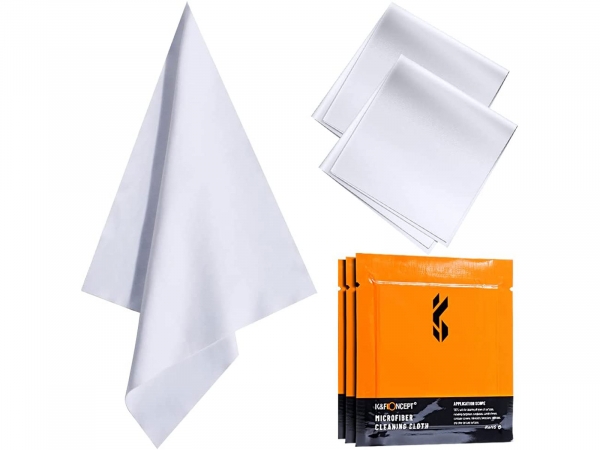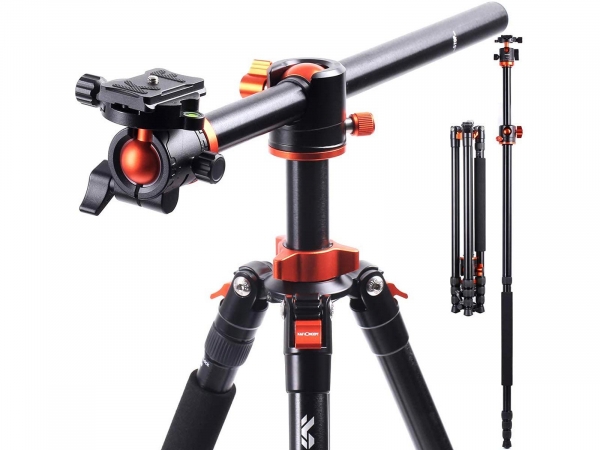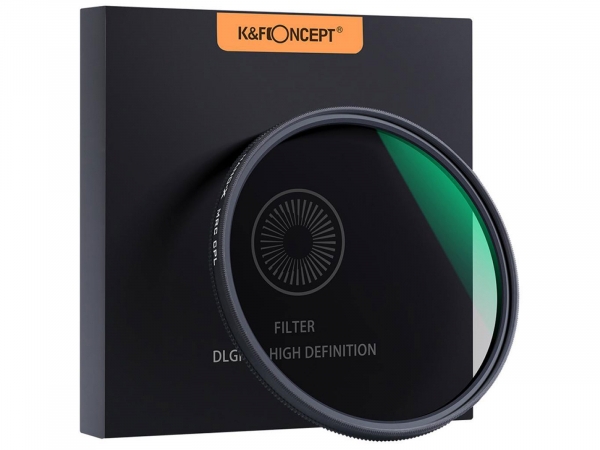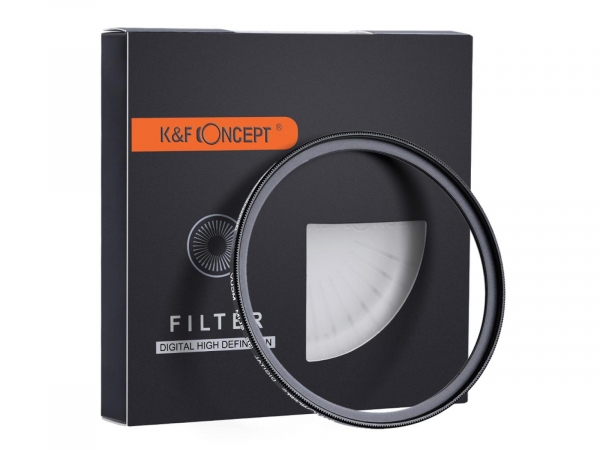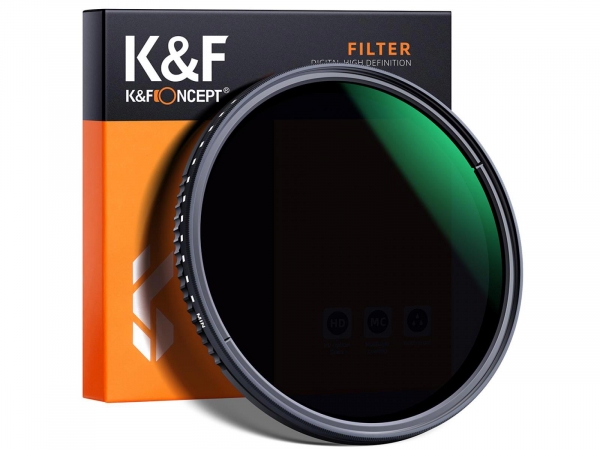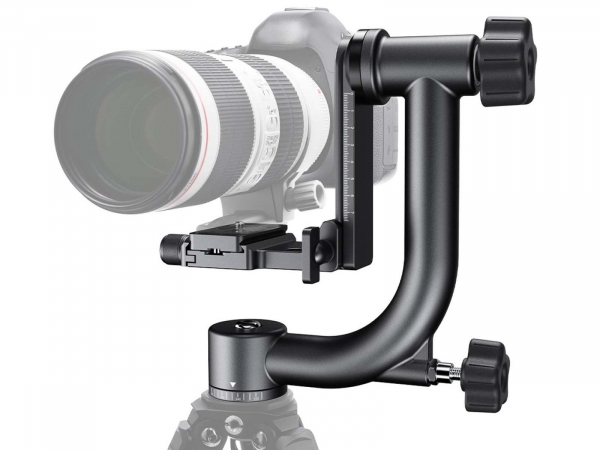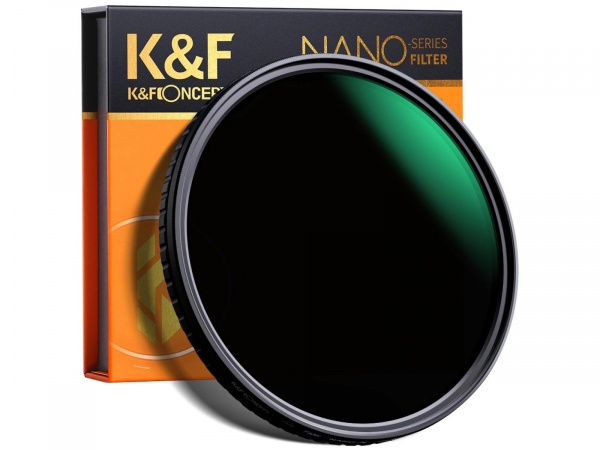| Lens mount |
| Nikon Z mount |
| Image sensor format |
| FX |
| Image sensor type |
| CMOS |
| Sensor size |
| 35.9 mm x 23.9 mm |
| Total pixels |
| 26.79 million |
| Dust-reduction system |
| Image sensor cleaning, Image Dust Off reference data (requires NX Studio) |
| Effective pixels |
| 24.5 million |
| Image size (pixels) |
| [FX (36 x 24)] selected for image area: |
| (L) 6048 x 4032 ( 24.4 million) |
| (M) 4528 x 3024 ( 13.7 million) |
| (S) 3024 x 2016 ( 6.1 million) |
| [DX (24 x 16)] selected for image area: |
| (L) 3984 x 2656 ( 10.6 million) |
| (M) 2976 x 1992 ( 5.9 million) |
| (S) 1984 x 1328 ( 2.6 million) |
| [1:1 (24 x 24)] selected for image area: |
| (L) 4032 x 4032 ( 16.3 million) |
| (M) 3024 x 3024 ( 9.1 million) |
| (S) 2016 x 2016 ( 4.1 million) |
| [16:9 (36 x 20)] selected for image area: |
| (L) 6048 x 3400 ( 20.6 million) |
| (M) 4528 x 2544 ( 11.5 million) |
| (S) 3024 x 1696 ( 5.1 million) |
| File format (image quality) |
| NEF (RAW): 14 bit; choose from lossless compression, high efficiency (high), and high efficiency options |
| JPEG: JPEG-Baseline compliant with fine (approx. 1 : 4), normal (approx. 1 : 8), or basic (approx. 1 : 16) compression; size-priority and optimal-quality compression available |
| HEIF: Supports fine (approx. 1 : 4), normal (approx. 1 : 8), or basic (approx. 1 : 16) compression; size-priority and optimal-quality compression available |
| NEF (RAW)+JPEG: Single photograph recorded in both NEF (RAW) and JPEG formats |
| NEF (RAW)+HEIF: Single photograph recorded in both NEF (RAW) and HEIF formats |
| Picture Control System |
| Auto , Standard , Neutral , Vivid , Monochrome , Flat Monochrome , Deep Tone Monochrome , Portrait , Rich Tone Portrait , Landscape , Flat |
| Creative Picture Controls (Dream, Morning, Pop, Sunday, Somber, Dramatic, Silence, Bleached, Melancholic, Pure, Denim, Toy, Sepia, Blue, Red, Pink, Charcoal, Graphite, Binary, Carbon); selected Picture Control can be modified; storage for Custom Picture Controls |
| Note: Choice of Picture Controls is restricted to Standard, Monochrome, and Flat when HLG is selected for tone mode during still photography. |
| Media |
| CFexpress (Type B) , XQD , SD , SDHC (UHS-II compliant) , SDXC (UHS-II compliant) |
| Dual card slot |
| 1 CFexpress card or XQD card and 1 Secure Digital (SD) card |
| Either card can be used for overflow or backup storage, for separate storage of NEF (RAW) and JPEG or HEIF pictures, or for storage of duplicate JPEG or HEIF pictures at different sizes and image qualities; pictures can be copied between cards. |
| File system |
| DCF 2.0, Exif 2.32, MPEG‑A MIAF |
| Viewfinder |
| 1.27-cm/0.5-in. approx. 5760k-dot UXGA OLED electronic viewfinder with color balance and auto and 19-level manual brightness controls; high frame-rate display available |
| Frame coverage |
| Approx. 100% horizontal and 100% vertical |
| Magnification |
| Approx. 0.8x (50 mm lens at infinity, -1.0 m-1) |
| Eyepoint |
| 21 mm (-1.0 m-1; from rearmost surface of viewfinder eyepiece lens) |
| Diopter adjustment |
| -4 to +2 m-1 |
| Eye sensor |
| Automatically switches between monitor and viewfinder displays |
| Compatible lenses |
| Z mount NIKKOR lenses |
| F mount NIKKOR lenses (mount adapter required; restrictions may apply) |
| Shutter type |
| Electronically-controlled vertical-travel focal-plane mechanical shutter; electronic front-curtain shutter; electronic shutter |
| Shutter speed |
| ¹⁄₈₀₀₀ to 30 s (choose from step sizes of ¹⁄₃, ¹⁄₂, and 1 EV, extendable to 900 s in mode M), bulb, time |
| When using an electronic shutter, the shutter speed can be set up to ¹⁄₁₆₀₀₀ s. |
| Flash sync speed |
| Flash synchronizes with shutter at speeds of ¹⁄₂₀₀ s or slower; faster sync speeds are supported with auto FP high-speed sync |
| When using an electronic shutter, flash synchronizes with the shutter at speeds of ¹⁄₆₀ s or slower; and auto FP high-speed sync cannot be used. |
| Release mode |
| Single frame , continuous low-speed , continuous high-speed , continuous high-speed (extended) , high-speed frame capture + with Pre-Release Capture , Self-timer |
| Approximate frame advance rate |
| Up to 120 fps |
| Continuous low-speed: Approx. 1 to 7 fps |
| Continuous high speed: Approx. 8.1 fps (when using the electronic shutter and image quality settings other than NEF (RAW) and NEF (RAW) +: approx. 16 fps) |
| Continuous high speed (extended): Approx. 14 fps (with electronic shutter: Approx. 20 fps) |
| High-speed frame capture + (C30): Approx. 30 fps |
| High-speed frame capture + (C60): Approx. 60 fps |
| High-speed frame capture + (C120): Approx. 120 fps |
| Maximum frame advance rate as measured by in-house tests. |
| Self-timer |
| 2 s, 5 s, 10 s, 20 s; 1 to 9 exposures at intervals of 0.5, 1, 2, or 3 s |
| Exposure Metering System |
| TTL metering using camera image sensor |
| Exposure Metering mode |
| Matrix metering |
| Center-weighted metering: Weight of 75% given to 12 or 8 mm circle in center of frame or weighting can be based on average of entire frame |
| Spot metering: Meters circle with a diameter of approximately 4 mm centered on selected focus point |
| Highlight-weighted metering |
| Exposure Range |
| -4 to +17 EV |
| Figures are for ISO 100 equivalent and f/2.0 lens at 20 °C/68 °F |
| Exposure Mode |
| AUTO: auto, P: programmed auto with flexible program, S: shutter-priority auto, A: aperture-priority auto, M: manual |
| Exposure compensation |
| -5 to +5 EV (choose from step sizes of ¹⁄₃ and ¹⁄₂ EV) |
| Exposure lock |
| Luminosity locked at detected value |
| ISO sensitivity (Recommended Exposure Index) |
| ISO 100 to 64000 (choose from step sizes of ¹⁄₃ and 1 EV); |
| can also be set to approx. 0.3, 0.7, or 1 EV (ISO 50 equivalent) below ISO 100 or to approx. 0.3, 0.7, 1, or 1.7 EV (ISO 204800 equivalent) above ISO 64000; auto ISO sensitivity control available |
| Note: ISO sensitivity is limited to 400 to 64000 when HLG is selected for tone mode. |
| Active D-Lighting |
| Auto, Extra high, High, Normal, Low, and Off |
| Multiple exposure |
| Add, average, lighten, darken |
| Other options |
| HDR overlay, photo mode flicker reduction, high-frequency flicker reduction |
| Autofocus system |
| Hybrid phase-detection/contrast AF with AF assist |
| Detection range |
| -10 to +19 EV |
| Measured in photo mode at ISO 100 equivalent and a temperature of 20 °C/68 °F using single-servo AF (AF‑S) and a lens with a maximum aperture of f/1.2 |
| Lens servo |
| Autofocus (AF): |
| Single-servo AF (AF-S) , continuous-servo AF (AF-C) , full-time AF (AF-F; available only in video mode); predictive focus tracking |
| Manual focus (M): |
| Electronic rangefinder can be used |
| Focus Point |
| 273 focus points (single-point AF), 299 focus points (auto-area AF); |
| Number of focus points available in photo mode with FX selected for image area |
| AF-area mode |
| Pinpoint (available in photo mode only), single-point, dynamic-area (S, M, and L; available in photo mode only), wide-area (S, L, C1, and C2), and auto-area AF; 3D-tracking (available in photo mode only); subject-tracking AF (available in video mode only) |
| Focus lock |
| Focus can be locked by pressing shutter-release button halfway (single-servo AF/AF‑S) or by pressing the center of the sub-selector |
| Camera on-board VR |
| 5-axis image sensor shift |
| Lens on-board VR |
| Lens shift (available with VR lenses) |
| Flash control |
| TTL: i‑TTL flash control; i‑TTL balanced fill-flash is used with matrix, center-weighted, and highlight-weighted metering, standard i‑TTL fill-flash with spot metering |
| Flash modes |
| Front-curtain sync, slow sync, rear-curtain sync, red-eye reduction, red-eye reduction with slow sync, off |
| Flash compensation |
| -3 to +1 EV (choose from step sizes of ¹⁄₃ and ¹⁄₂ EV) |
| Flash-ready indicator |
| Lights when optional flash unit is fully charged; flashes as underexposure warning after flash is fired at full output |
| Accessory shoe |
| ISO 518 hot-shoe with sync and data contacts and safety lock |
| Nikon Creative Lighting System (CLS) |
| i-TTL flash control, radio-controlled Advanced Wireless Lighting, optical Advanced Wireless Lighting, modeling illumination, FV lock, Color Information Communication, auto FP high-speed sync, unified flash control |
| White balance |
| Auto (3 types), natural light auto, direct sunlight, cloudy, shade, incandescent, fluorescent (3 types), flash, choose color temperature (2500 to 10,000 K), preset manual (up to 6 values can be stored), all with fine-tuning |
| Bracketing types |
| Exposure and/or flash, white balance, ADL |
| Other options for still photography |
| Vignette control, diffraction compensation, auto distortion control, skin softening, portrait impression balance, and interval-timer, focus-shift, and pixel-shift photography |
| Video Metering system |
| TTL metering using camera image sensor |
| Video Metering mode |
| Matrix, center-weighted, or highlight-weighted |
| Video Frame size (pixels) and frame rate |
| 5376 x 3024 (5.4K): 60p/50p/30p/25p/24p |
| 3840 x 2160 (4K UHD): 120p/100p/60p/50p/30p/25p/24p |
| 1920 x 1080: 240p/200p/120p/100p/60p/50p/30p/25p/24p |
| 1920 x 1080 (slow-motion): 30p x4/25p x4/24p x5 |
| Note: Actual frame rates for 240p, 200p, 120p, 100p, 60p, 50p, 30p, 25p, and 24p are 239.76, 200, 119.88, 100, 59.94, 50, 29.97, 25, and 23.976 fps respectively. |
| Video Frame size (pixels) and frame rate (RAW video) |
| 6048 x 3402: 60p/50p/30p/25p/24p |
| 4032 x 2268: 60p/50p/30p/25p/24p |
| 3984 x 2240: 120p/100p/60p/50p/30p/25p/24p |
| Note: Actual frame rates for 120p, 100p, 60p, 50p, 30p, 25p, and 24p are 119.88, 100, 59.94, 50, 29.97, 25, and 23.976 fps respectively. |
| Video File format |
| NEV, MOV, MP4 |
| Video compression |
| N-RAW (12 bit), Apple ProRes RAW HQ (12 bit), Apple ProRes 422 HQ (10 bit), H.265/HEVC (8 bit/10 bit), H.264/AVC (8 bit) |
| Audio recording format |
| Linear PCM (48 KHz, 24 bit, for videos recorded in NEV or MOV format) , AAC (48 KHz, 16 bit, for videos recorded in MP4 format) |
| Audio recording device |
| Built-in stereo or external microphone can be used; external audio devices can be used via line input, audio input sensitivity adjustable; attenuator, frequency response, and wind noise reduction functions |
| Exposure compensation |
| -3 to +3 EV (choose from step sizes of ¹⁄₃ and ¹⁄₂ EV) |
| ISO sensitivity (Recommended Exposure Index) |
| Mode M: Manual selection (ISO 100 to 51200; choose from step sizes of ¹⁄₆, ¹⁄₃ and 1 EV); with additional options available equivalent to approximately 0.3, 0.7, 1, or 2 EV (ISO 204800 equivalent) above ISO 51200; auto ISO sensitivity control (ISO 100 to Hi 2.0) available with selectable upper limit |
| Note: ISO sensitivity is limited to 400 to 51200 when HLG is selected for tone mode. |
| Note: ISO sensitivity is limited to Lo 0.3 to 2.0 and 800 to 51200 when N-Log is selected for tone mode. |
| Modes P, S, A: Auto ISO sensitivity control (ISO 100 to Hi 2.0) with selectable upper limit |
| AUTO mode: Auto ISO sensitivity control (ISO 100 to 51200) |
| Active D-Lighting |
| Extra high, High, Normal, Low, and Off |
| Other options for video recording |
| Time-lapse video recording, electronic vibration reduction, time codes, N-Log and HDR (HLG) video, wave-form display, red REC frame indicator, video recording display zoom (50%, 100%, and 200%), extended shutter speeds (modes S and M), and dual-format (proxy-video) recording for RAW video; option to view video recording info available via i menu; Hi-Res Zoom |
| Monitor size |
| 8 -cm ( 3.2 –in.) diagonal |
| Monitor type |
| Vari-angle TFT touch-sensitive LCD with 170° viewing angle, approximately 100% frame coverage, and color balance and 15-level manual brightness controls |
| Monitor resolution |
| Approx. 2100 k-dot |
| Playback |
| Full-frame and thumbnail (up to 4, 9, or 72 pictures) playback with playback zoom, playback zoom cropping, video playback, slide shows, histogram display, highlights, photo information, location data display, auto picture rotation, picture rating, voice memo recording and playback, IPTC information embedding and display, filtered playback, skip to first shot in series, series playback, save consecutive frames, and motion blend |
| USB connector |
| Type C SuperSpeed USB connector; connection to built-in USB ports is recommended |
| HDMI output connector |
| Type A HDMI connector |
| External audio input |
| Stereo mini-pin jack (3.5 mm diameter; plug-in power and line input supported) |
| Audio output |
| Stereo mini-pin jack (3.5 mm diameter) |
| Accessory terminal |
| Built-in (can be used with MC-DC2 remote cords and other optional accessories) |
| Wi-Fi "NIJ" |
| Standards: |
| IEEE802.11b/g/n/a/ac |
| Operating frequency: |
| 2412 to 2472 MHz (channel 13) and 5180 to 5700 MHz |
| Maximum output power (EIRP): |
| 2.4 GHz band: 3.8 dBm |
| 5 GHz band: 9.5 dBm |
| Authentication: |
| Open system, WPA2-PSK, WPA3-SAE |
| Wi-Fi "NICS" |
| Standards: |
| IEEE 802.11b/g/n/a/ac |
| Operating frequency: |
| 2412 to 2472 MHz (channel 13) and 5150 to 5850 MHz (5150 to 5350 MHz and 5725 to 5850 MHz) |
| Maximum output power (EIRP): |
| 2.4 GHz band: 3.8 dBm |
| 5 GHz band: 9.5 dBm |
| Authentication: |
| Open system, WPA2-PSK, WPA3-SAE |
| Wi-Fi "NIKC" |
| Standards: |
| IEEE 802.11b/g/n/a/ac |
| Operating frequency: |
| 2412 to 2472 MHz (channel 13) and 5180 to 5825 MHz (5180 to 5700 MHz and 5745 to 5825 MHz) |
| Maximum output power (EIRP): |
| 2.4 GHz band: 3.8 dBm |
| 5 GHz band: 9.5 dBm |
| Authentication: |
| Open system, WPA2-PSK, WPA3-SAE |
| Wi-Fi "Others" |
| Standards: |
| IEEE 802.11b/g/n/a/ac (Europe, Africa, the Middle East, Asia, Oceania, U.S.A., Canada, and Mexico) |
| IEEE 802.11b/g/n/a (The Americas, other than U.S.A., Canada, and Mexico) |
| Operating frequency: |
| Europe (other than Ukraine), Israel, Turkey and India: 2412 to 2472 MHz (channel 13) and 5180 to 5825 MHz (5180 to 5700 MHz and 5745 to 5825 MHz) |
| Algeria, Egypt, Morocco, the Republic of Congo, and Ukraine: 2412 to 2462 MHz (channel 11) and 5180 to 5320 MHz |
| Africa (other than Algeria, Egypt, Morocco, and the Republic of Congo), Asia (other than Turkey), and the Middle East (other than Israel): 2412 to 2462 MHz (channel 11) and 5745 to 5805 MHz |
| U.S.A., Canada, Mexico, Australia, New Zealand, the Republic of Fiji, and Papua New Guinea: 2412 to 2462 MHz (channel 11) and 5180 to 5825 MHz (5180 to 5580 MHz, 5660 to 5700 MHz, and 5745 to 5825 MHz) |
| Other countries in the Americas: 2412 to 2462 MHz (channel 11) and 5180 to 5805 MHz (5180 to 5320 MHz and 5745 to 5805 MHz) |
| Maximum output power (EIRP): |
| 2.4 GHz band: 3.8 dBm |
| 5 GHz band: 9.5 dBm |
| Authentication: |
| Open system, WPA2-PSK, WPA3-SAE |
| Bluetooth |
| Communication protocols: |
| Bluetooth Specification version 5.0 |
| Operating frequency: |
| Bluetooth: 2402 to 2480 MHz |
| Bluetooth Low Energy: 2402 to 2480 MHz |
| Maximum output power (EIRP): |
| Bluetooth: -1.7 dBm |
| Bluetooth Low Energy: -3.2 dBm |
| Battery |
| One EN‑EL15c rechargeable Li-ion battery* |
| *EN‑EL15b and EN‑EL15a batteries can be used in place of the EN‑EL15c. Note, however, that fewer pictures can be taken on a single charge than with the EN‑EL15c. EH-8P AC adapters can be used to charge EN‑EL15c and EN‑EL15b batteries only. |
| Battery pack |
| MB-N14 power battery packs (available separately) taking two EN‑EL15c* batteries |
| *EN‑EL15b and EN‑EL15a batteries can be used in place of the EN‑EL15c. Note, however, that fewer pictures can be taken on a single charge than with the EN‑EL15c. |
| AC adapter |
| EH-8P AC adapters (available separately); supplied UC‑E25 USB cable required |
| EH‑5d, EH‑5c, and EH‑5b AC adapters; requires EP‑5B power connector (available separately) |
| Tripod socket |
| 0.635 cm (¹⁄₄ in., ISO 1222) |
| Dimensions (W x H x D) |
| Approx. 138.5 x 101.5 x 74 mm ( 5.5 x 4 x 3 in.) |
| Weight |
| Approx. 760 g |
| ( 1 lb. 10.9 oz. ) |
| with battery and memory card but without body cap and accessory shoe cover; approx. 670 g/1 lb. 7.7 oz. (camera body only) |
| Operating Environment |
| Temperature: -10 °C to 40 °C (+14 °F to 104 °F) |
| Humidity: 85% or less (no condensation) |
| Supplied accessories |
| BS‑1 Accessory Shoe Cover (comes attached to camera), DK‑29 Rubber Eyecup (comes attached to camera), BF‑N1 Body Cap, EN‑EL15c Rechargeable Li-ion Battery with terminal cover, HDMI/USB Cable Clip, AN‑DC26 Strap, UC‑E25 USB Cable |
| Note |
| Unless otherwise stated, all measurements are performed in conformity with Camera and Imaging Products Association (CIPA) standards or guidelines. |
| All figures are for a camera with a fully-charged battery. |
| Throughout this document, “FX format” and “FX” are used in reference to an angle of view equivalent to that of a 35 mm format (“full frame”) camera and “DX format” and “DX” to an angle of view equivalent to that of an APS-C camera. |
| The sample images displayed on the camera and the images and illustrations in this document are for expository purposes only. |
| Nikon reserves the right to change the appearance, specifications, and performance of the product described in this document at any time and without prior notice. Nikon will not be held liable for damages that may result from any mistakes that this document may contain. |




